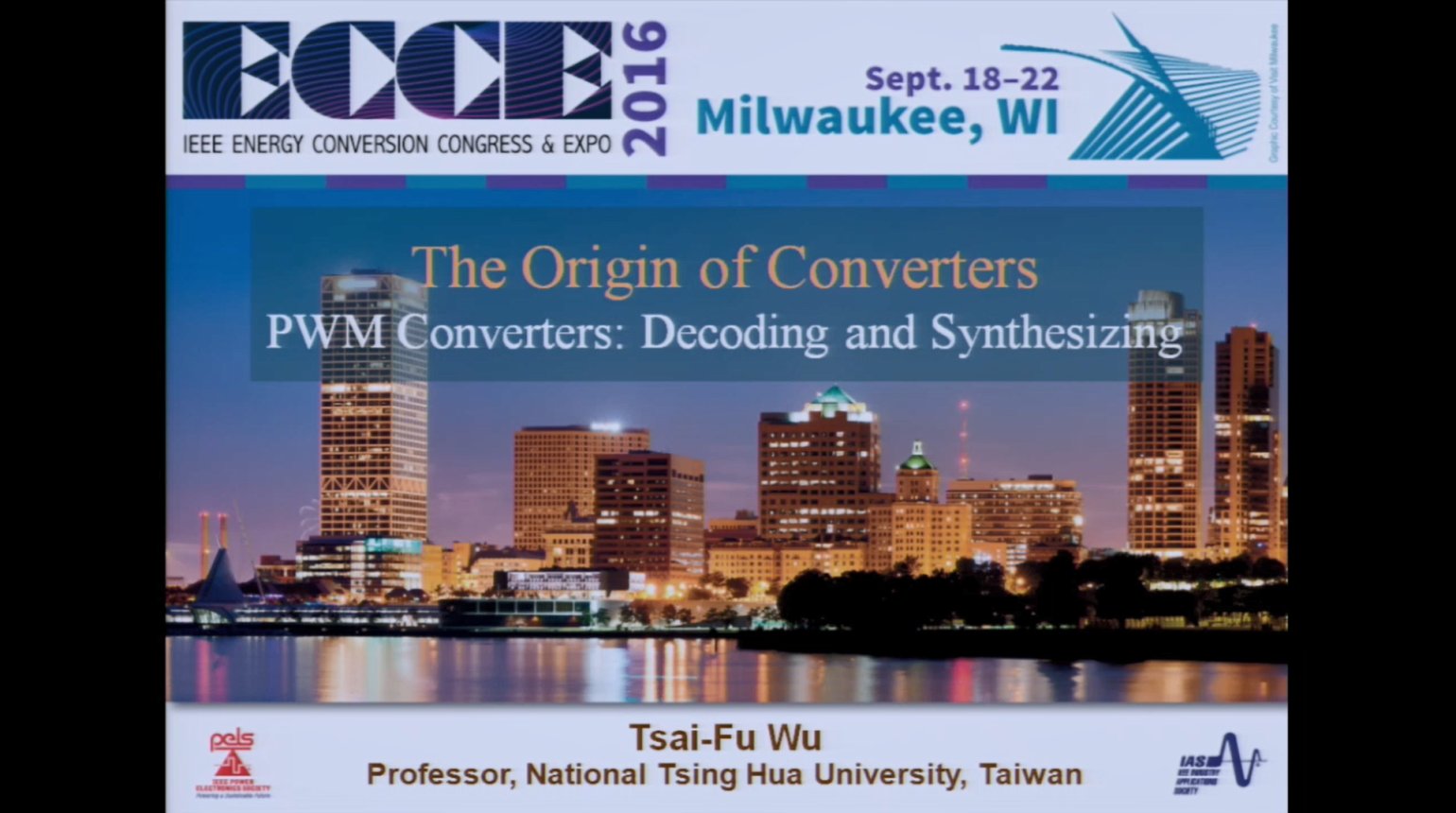Collection:

Instructors: Tsai-Fu Wu, National Tsing Hua University, Taiwan
PWM converters have been widely applied for power processing and they are typically the stems of other types of converters, such as quasi-resonant, Z-source and switched-inductor hybrid converters. Development of PWM converters has been spanning over a century, starting from the buck converter. The well-known PWM converters include buck, boost, buck-boost, uk, SEPIC, Zeta, Z-source, quasi-Z source, etc. Many attempts have been proposed to develop these converters based mostly on canonical cell concepts and by introducing extra LC filters to the cells. Charles Darwin published a book, namely ?The Origin of Species?. He claimed organic beings were evolved from the original species. Analogously, does there exist the origin of converters? This tutorial lecture presents identification of the original converter, from which the rest of converters can be evolved and derived systematically. The processes of converter evolution and derivation including decoding and synthesizing will be then presented, which bridge transfer gains or codes to converter topologies uniquely. Unlike conventional approaches based on switching cell or LC cell concept, we develop converters from the original converter and its derived. During presentation, the well-known converters will be illustrated with the discussed processes. This tutorial will provide research experts, engineers and students a prospective vision of power converter evolution, derivation and development.
- IEEE MemberUS $50.00
- Society MemberUS $0.00
- IEEE Student MemberUS $50.00
- Non-IEEE MemberUS $75.00
Videos in this product
The Origin of Converters Part I
Instructors: Tsai-Fu Wu, National Tsing Hua University, Taiwan PWM converters have been widely applied for power processing and they are typically the stems of other types of converters, such as quasi-resonant, Z-source and switched-inductor hybrid converters. Development of PWM converters has been spanning over a century, starting from the buck converter. The well-known PWM converters include buck, boost, buck-boost, uk, SEPIC, Zeta, Z-source, quasi-Z source, etc. Many attempts have been proposed to develop these converters based mostly on canonical cell concepts and by introducing extra LC filters to the cells. Charles Darwin published a book, namely ?The Origin of Species?. He claimed organic beings were evolved from the original species. Analogously, does there exist the origin of converters? This tutorial lecture presents identification of the original converter, from which the rest of converters can be evolved and derived systematically. The processes of converter evolution and derivation including decoding and synthesizing will be then presented, which bridge transfer gains or codes to converter topologies uniquely. Unlike conventional approaches based on switching cell or LC cell concept, we develop converters from the original converter and its derived. During presentation, the well-known converters will be illustrated with the discussed processes. This tutorial will provide research experts, engineers and students a prospective vision of power converter evolution, derivation and development.
The Origin of Converters Part II
Instructors: Tsai-Fu Wu, National Tsing Hua University, Taiwan PWM converters have been widely applied for power processing and they are typically the stems of other types of converters, such as quasi-resonant, Z-source and switched-inductor hybrid converters. Development of PWM converters has been spanning over a century, starting from the buck converter. The well-known PWM converters include buck, boost, buck-boost, uk, SEPIC, Zeta, Z-source, quasi-Z source, etc. Many attempts have been proposed to develop these converters based mostly on canonical cell concepts and by introducing extra LC filters to the cells. Charles Darwin published a book, namely ?The Origin of Species?. He claimed organic beings were evolved from the original species. Analogously, does there exist the origin of converters? This tutorial lecture presents identification of the original converter, from which the rest of converters can be evolved and derived systematically. The processes of converter evolution and derivation including decoding and synthesizing will be then presented, which bridge transfer gains or codes to converter topologies uniquely. Unlike conventional approaches based on switching cell or LC cell concept, we develop converters from the original converter and its derived. During presentation, the well-known converters will be illustrated with the discussed processes. This tutorial will provide research experts, engineers and students a prospective vision of power converter evolution, derivation and development.
 Cart
Cart Create Account
Create Account Sign In
Sign In

